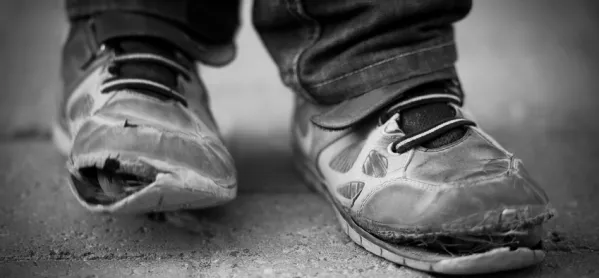- Home
- Rushed reforms harm our poorest pupils the most
Rushed reforms harm our poorest pupils the most

The use of education to pursue greater social mobility has been a recurrent theme during the New Labour, Coalition and Conservative governments. Yet, what this means in practice is contested.
Since the 1870s, when government was concerned with the task of establishing universal primary education, and the 1970s, when concerns shifted to the establishment of comprehensive secondary education and the inclusion of children with special educational needs and disabilities in mainstream schools, the purpose and nature of education for the poor has been an ongoing source of debate.
The manifestation of this in our accountability-focused times is the disadvantage gap in attainment. Today, the Education Policy Institute’s third annual report asks searching questions about the latest trends and concludes that while the gap in GCSE English and maths grades (equivalent to 18 months of learning) continues to narrow each year, the rate at which it is closing is slowing substantially. The year in which the gap is expected to close has become increasingly distant - at over 100 years from now based on the latest five-year trend.
There has been no progress at all in narrowing the even larger gap (23 months) for children who experience persistent poverty in their school lives.
Set against these worrying developments, we found some encouraging signs that the gap in the curriculum experienced by disadvantaged pupils is shrinking. Following the introduction of the Progress 8 performance measure, there has been a shift towards GCSEs in sciences, English literature, and to a lesser extent history and geography.
This has not caused the GCSE gap for all subjects to widen, as might have been the case if disadvantaged pupils were not able to succeed in these subjects. In fact, there was a large increase in English literature entries in 2017 including disadvantaged pupils - this reduced the gap by almost a month.
This suggests that broadening the GCSE curriculum is not antithetical to closing the gap and raises further questions over the government’s rationale for the expansion of selective schooling -- a policy which amounts to the segregation of children into higher or lower curricular expectations which directly link to educational progression and labour market prospects.
The theme of socioeconomic segregation is also echoed in our analysis of the post-16 activities of disadvantaged and non-disadvantaged young people. The proportion of young people remaining in education after their GCSEs has increased across the board. But for better-off young people this has overwhelmingly meant staying on in sixth forms, whereas for disadvantaged students it has resulted in a greater spread across further education colleges and specialist and alternative provision; and increasing segregation since 2013.
At EPI, we’re often asked what needs to be done to make better progress in closing the gap. Aside from the obvious response of restoring funding to schools and broader local authority children’s services, the answers often lie in a serious commitment to the task of building and improving services.
One doesn’t need to look far for an example of failure to attach sufficient priority to those parts of the education system that disadvantaged children are heavily exposed to. In its rush to deliver the first phase of T-levels in 2020 (despite warnings from DfE’s permanent secretary and a legal challenge from the Federation of Awarding Bodies), the government has revealed a lack of care for the consequences to disadvantaged children.
Firstly, disadvantaged students are heavily concentrated into technical and vocational courses and will, therefore, act as guinea pigs for the new T-levels - a fate which skills minister Anne Milton would advise her own children not to risk.
Secondly, childcare is one of the phase 1 T-levels that will be pushed through at breakneck speed, subjecting an already short-staffed and under-trained sector to further risk. Our literature review highlights the importance of sustained support for disadvantaged families from conception onwards, and the consequence of rushed childcare T-levels could well harm the next generation of disadvantaged children attending pre-schools staffed by childcare workers whose training was the subject of this experiment.
The pursuit of educational reform as a process of scrapping and reinventing things at high speed is nothing new, but it is almost always the poor who suffer the consequences. This can be seen in the abandonment of children’s centres and in the lack of teacher training and resources for children with English as an additional language or special educational needs, as much as in the current push for hasty reform of vocational qualifications.
As the stalling of reductions in the disadvantage gap shows, the government focuses on the pace and visibility of reforms rather than their content and quality - at the expense of other people’s children.
Jo Hutchinson is director for social mobility and vulnerable learners at the Education Policy Institute.
Keep reading for just £1 per month
You've reached your limit of free articles this month. Subscribe for £1 per month for three months and get:
- Unlimited access to all Tes magazine content
- Exclusive subscriber-only stories
- Award-winning email newsletters

